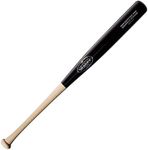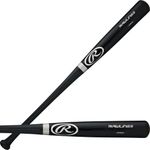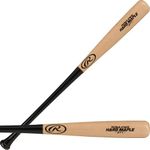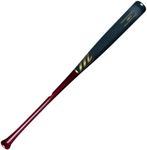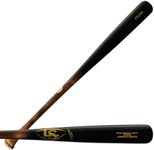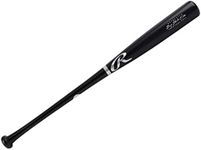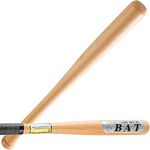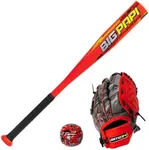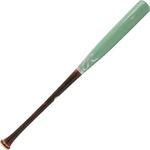Buying Guide for the Best Wood Baseball Bats
Choosing the right wood baseball bat can significantly impact your performance on the field. It's important to consider various factors to ensure you select a bat that suits your playing style, strength, and preferences. Here are some key specifications to consider when picking a wood baseball bat and how to navigate through them to find the best fit for you.Type of WoodThe type of wood used in a baseball bat affects its durability, weight, and performance. Common types include ash, maple, and birch. Ash bats are known for their flexibility and lighter weight, making them easier to swing. Maple bats are denser and harder, providing more power but can be heavier. Birch bats offer a balance between ash and maple, combining flexibility with hardness. Choose ash if you prefer a lighter bat, maple if you want more power, and birch for a balanced option.
Bat LengthBat length is measured in inches and affects your reach and swing mechanics. Longer bats provide greater reach but can be harder to control, while shorter bats offer better control but less reach. Bat lengths typically range from 28 to 34 inches. To find the right length, consider your height and arm length. Taller players or those with longer arms may prefer longer bats, while shorter players or those with shorter arms may find shorter bats more comfortable.
Bat WeightBat weight is crucial for your swing speed and control. Heavier bats can generate more power but may slow down your swing, while lighter bats allow for faster swings but may reduce power. Bat weight is often indicated by the drop weight, which is the difference between the bat's length and weight. For example, a bat that is 32 inches long and weighs 29 ounces has a drop weight of -3. Beginners or players focusing on speed may prefer lighter bats, while experienced players looking for power might opt for heavier bats.
Barrel SizeThe barrel size refers to the diameter of the bat's hitting area. Larger barrels provide a bigger sweet spot, making it easier to make solid contact with the ball, while smaller barrels offer more control and precision. Barrel sizes typically range from 2.5 to 2.75 inches. If you're a beginner or looking for more forgiveness on off-center hits, a larger barrel might be beneficial. More experienced players who prioritize control and precision might prefer a smaller barrel.
Handle ThicknessHandle thickness affects your grip and comfort. Thicker handles can provide a more secure grip and reduce vibrations on contact, while thinner handles allow for more wrist action and quicker bat speed. Handle thickness is a personal preference and can vary among players. If you have larger hands or prefer a more secure grip, a thicker handle might be suitable. Conversely, if you have smaller hands or prefer more wrist action, a thinner handle could be a better choice.
End CapThe end cap of a bat can influence its balance and swing weight. End-loaded bats have more weight towards the end, providing more power but can be harder to control. Balanced bats distribute weight more evenly, offering better control and faster swing speeds. Consider your playing style when choosing the end cap. Power hitters might prefer end-loaded bats for the added power, while contact hitters or those focusing on control might opt for balanced bats.

